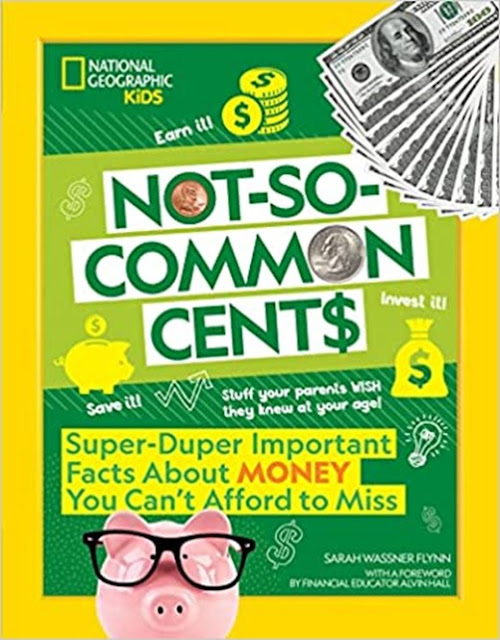The Global Effort: A LOOK AT THE IMF AND THE WORLD BANK
With
so many different countries—and currencies—around the world, it’s a tough task
to keep it all in check. But there are two major groups that attempt to do just
that. The International Monetary Fund (better known as the IMF) and the World
Bank are separate branches of the United Nations, an organization of countries
focused on keeping peace around the planet. Together, the IMF and the World
Bank help countries develop their economies. But there are definite differences
between the two.
THE
IMF
ESTABLISHED:1944
LOCATION: Headquarters in Washington, D.C., with
offices around the world
ITS
MISSION: The IMF originally began as a
way to help countries struggling financially after World War II. Today, the IMF
is made up of representatives of some 190 countries, with the purpose of
overseeing the stability of the world’s monetary system. Part of this includes
keeping exchange rates stable, bailing out countries in money trouble, and
smoothing out financial relationships among different nations.
THE
IMF IN ACTION: With a total of one
trillion dollars to lend to member countries, the IMF acts as a life raft to
countries struggling with debt. When Pakistan’s economy tanked after a 2005
earthquake, the country received a large loan from the IMF. Later, in 2019,
Pakistan accepted another six billion dollars from the IMF, which the country
is expected to pay back eventually. And when Greece struggled to keep its
economy from collapsing, the IMF stepped in with one of its largest loans ever,
at about $145 billion. The IMF also responded to countries that needed
emergency financial assistance because of the COVID-19 pandemic, beginning in
2020.
THE
WORLD BANK
ESTABLISHED:1944
LOCATION: Headquarters in Washington, D.C., with
offices worldwide
ITS
MISSION: The World Bank focuses on
offering financial assistance and other services to countries with developing
economies. It also invests in projects that can bring a boost to local
communities, such as renewable energy and agriculture. This is all in an effort
to reduce poverty, or the state of being extremely poor (defined by the World
Bank as those who live on less than$1.90 a day) around the world.
THE
WORLD BANK IN ACTION: With the help of
the World Bank, Sri Lanka recently rose from a developing country that was
recovering from nearly 30 years of civil war to a lower-middle-income
nation. Currently, the World Bank is
putting extra effort into initiatives focusing on solar power and sustainable
energy. The Bank’s hope? To curb climate
change, especially in developing nations, where rising temperatures can hurt
their economies
WHERE
DOES THE MONEY COME FROM?
Both
the IMF and the World Bank distribute a lot of bucks. Billions, to be exact! So
what deep pockets are they pulling from? For the IMF, members contribute some
$675 billion a year, with Germany, Japan, China, and the United States paying
the most. (Each country’s quota is based on a formula that reflects its
position in the world economy.) The World Bank, on the other hand, gets most of
its funds from selling bonds to investors as well as from member country
donations.
Cha-ching! Learn everything adults wish they knew
about money when they were kids―and more―including how to make it, save it, and
multiply it!
While money certainly isn’t everything, one fact is
true: No matter where you live in the world, money is a basic necessity. From
the clothes on your back to the food on your plate, chances are, money is
somehow involved in almost all of your day-to-day activities.
In this book you’ll discover exactly what money is, along with:
·How society went from bartering to using bucks
· Basics of saving (including some brilliant hacks), investing, and interest
· What “credit” really means
· Inventive ways to get your ideas flowing and money growing
· What the stock market is, and how money moves around the world today
· Ins and outs of cryptocurrency and other “new” money
· The importance of giving back―one of the best things a fiscally responsible
global citizen can do
· Why being smart with money = a big step toward independence
So jump in, and find out the mind-blowing secrets and
stats about money!
About the Author
SARAH WASSNER FLYNN is a longtime writer for
National Geographic Kids. She loves writing, running, and triathlons. When
she's not writing about races, she's usually training or competing in one. She
also writes nonfiction books and articles for kids and teens, like National Geographic Kids National Park Guide
U.S.A., This Book Stinks!, Weird But True Know-It-All Greek Mythology,
and Girls' Life Guide to Being the Most
Amazing You.
About the Foreword Writer
ALVIN HALL is an internationally recognized,
award-winning financial educator, author, and television and radio host. He’s
the author of the best-selling financial advice books You and Your Money, Your Money or Your Life, What Not to Spend, Getting Started in Mutual Funds, and his 2008
children’s book Show Me the Money.
In 2006, he was awarded the Wincott Award for business journalism for his 2006
documentary Jay-Z: From Brooklyn to the
Boardroom about the life of rapper Jay-Z. In addition, he was
the longtime host of the award-winning BBC radio finance program Your Money or Your Life.
GIVEAWAY
- One (1) winner will receive a copy of Not-So-Common Cents
- US/Can only
- Ends 3/11 at 11:59 pm ET
- Enter via the Rafflecopter below (Good luck!)
- Visit the other stops on the tour for more chances to win!
Blog Tour
Schedule:
February 27th
— Log Cabin Library
February 28th
— Eye-Rolling Demigod’s Book Blog
March 1st – Crafty Moms Share
March 2nd -- Geo Librarian
March
3rd — Chat With Vera






